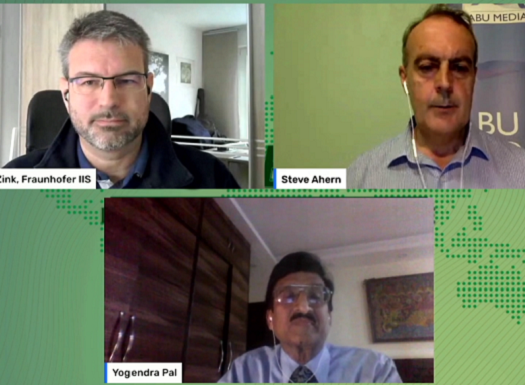DRM shared Some Findings after the Recent DRM FM Trial in India as part of the session on Technologies and Strategies for Successful Digital Radio Rollout, moderated by Steve Ahern, Head of ABU Media Academy on the second day of DBS 2021.
The presentation featured Alexander Zink, Senior Business Development Manager, Digital Radio & Streaming Applications, Fraunhofer, and Vice-Chairman of the DRM Consortium and Vice-Chairman Technical Committee and Yogendra Pal, Honorary Chairman of the India Chapter of DRM Consortium and honorary member of Board of DRM Consortium.
India is a country with a population of 1.3 billion, and its public broadcaster All India Radio (AIR) has 678 transmitters, of which 135 are MW, 48 are SW and 495 are FM. The MW and FM services together cover 99.4% of the population. In addition, private broadcasters with 330 stations presently cover about 40 percent of the country with a planned expansion to 839 stations. There are also 200 community stations.
It is one of the world’s largest digital radio deployments with 35 MW and 3 SW transmitters in pure DRM covering almost 900 million people. There are already about three million cars with line-fir DRM in the country, chipsets exist to support all standards and car manufacturers are not charging extra from consumers for DRM receivers.
Two DRM FM band workshops were held in February and March this year in Delhi and Jaipur which gave a demo of single DRM signal as well as multi-DRM configuration.
The DRM signal offers up to four services – three audio and one multimedia journaline service in a block of 96kHz in high quality stereo sound. Another feature is the Emergency Warning Functionality (EWF), which was tested by AIR on DRM MW transmitters in Delhi. Through EWF, and emergency alert can be sent to all digital radio receivers which can switch on a re-tune automatically and make multi-lingual announcements through text instructions.
An advanced application of the DRM signal is also distance learning and public signage service based on Journaline feature which enhances content with designs and graphic, can reference article images/photos and supports file download.
The workshop gave s demonstration of a 100 W DRM transmission, which was measured to rech 24.72 km, after which it was stopped due to sporadic receiver dropouts. Using a pure digital, multi DRM configuration, up to 6 DRM signals – 18 audio and 6 multimedia Journaline services, can be sent side-by-side from the same transmitter.
In case of a simulcast DRM operation, both analogue FM and up to 4 DRM signals with 12 audio and 4 Journaline services can be sent from the same transmitter.
When testing DRM in analogue FM white spaces, up to 5 signals – 15 audio and 5 multimedia Journalise services could be sent from the same transmitter in the white space of 600kHz between two existing analogue FM services of 10 kW each.
Yogendra concluded that “DRM in FM band is best suited for the Indian environment because of its ease in implementation and digitisation without disturbing existing analogue DRM services. It is also possible to upgrade existing DRM receivers and android phones can receive DRM in FM band using off-the shelf dongles and Fraunhofer MultimediaPlayer Radio app. Another advantage of DRM is that it can be used through extension of standard used in MW bands, there are no additional IP royalties and there is a ready receiver ecosystem for Indian market. There is also a vast domestic knowhow in chipset design. It is fully compliant with broadcast regulator TRAI recommendations and existing analogue spectrum licensing. There is also a commercial potential for broadcasters to generate additional revenue through Journaline and offer more content to more listeners.”
Subscribe to the radioinfo podcast on these platforms: Acast, Apple iTunes Podcasts, Podtail, Spotify, Google Podcasts, TuneIn, or wherever you get your podcasts.


